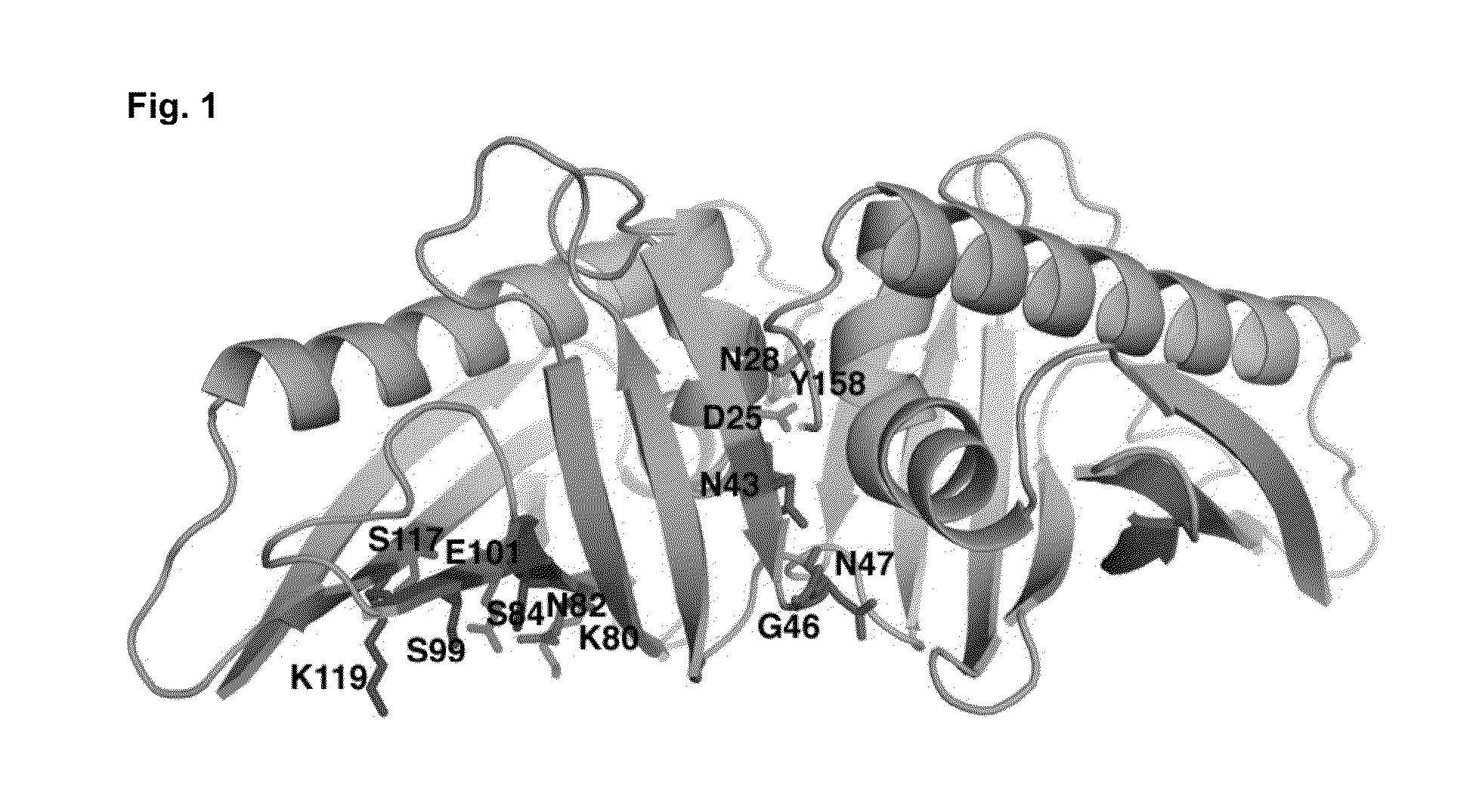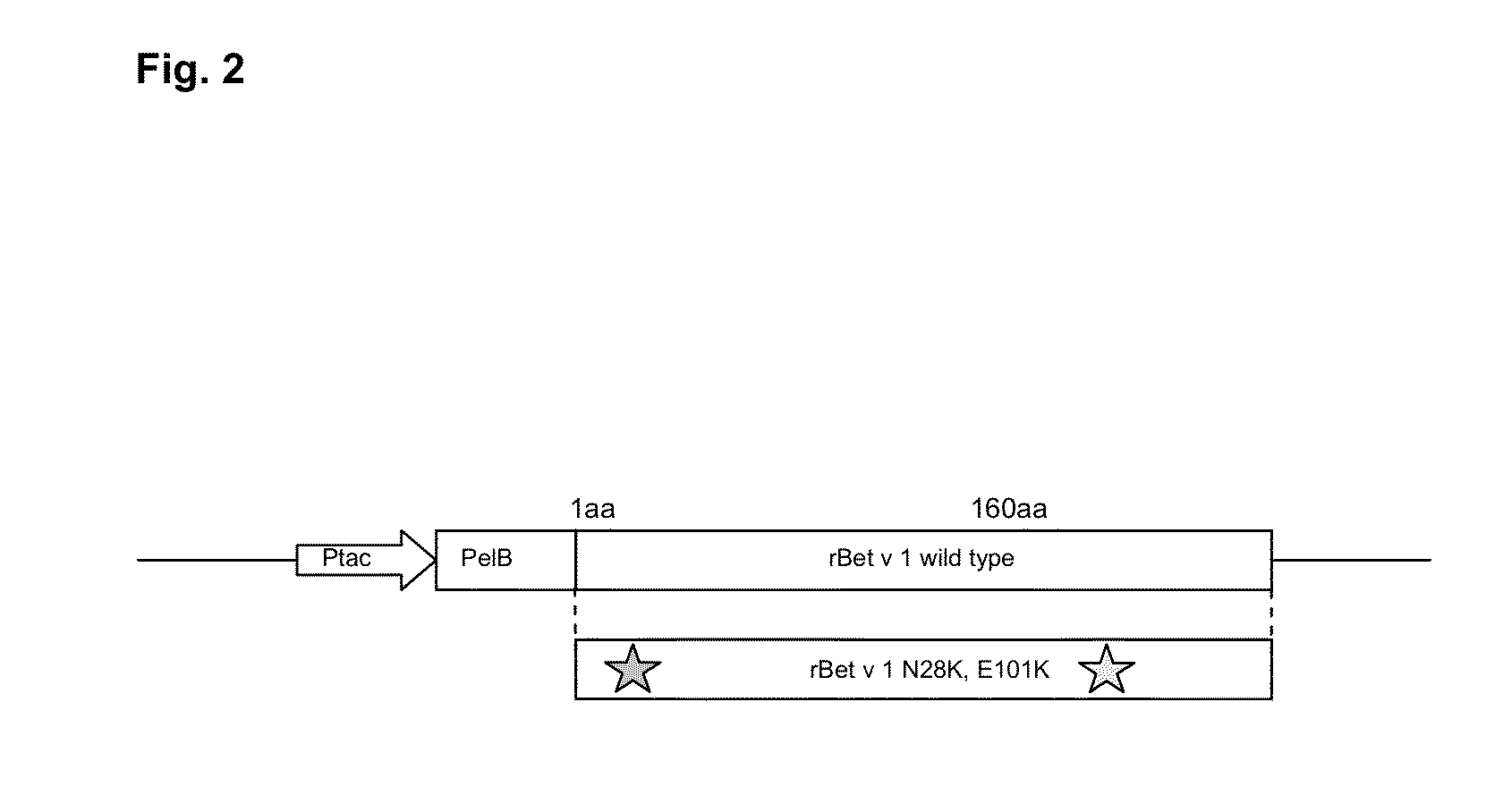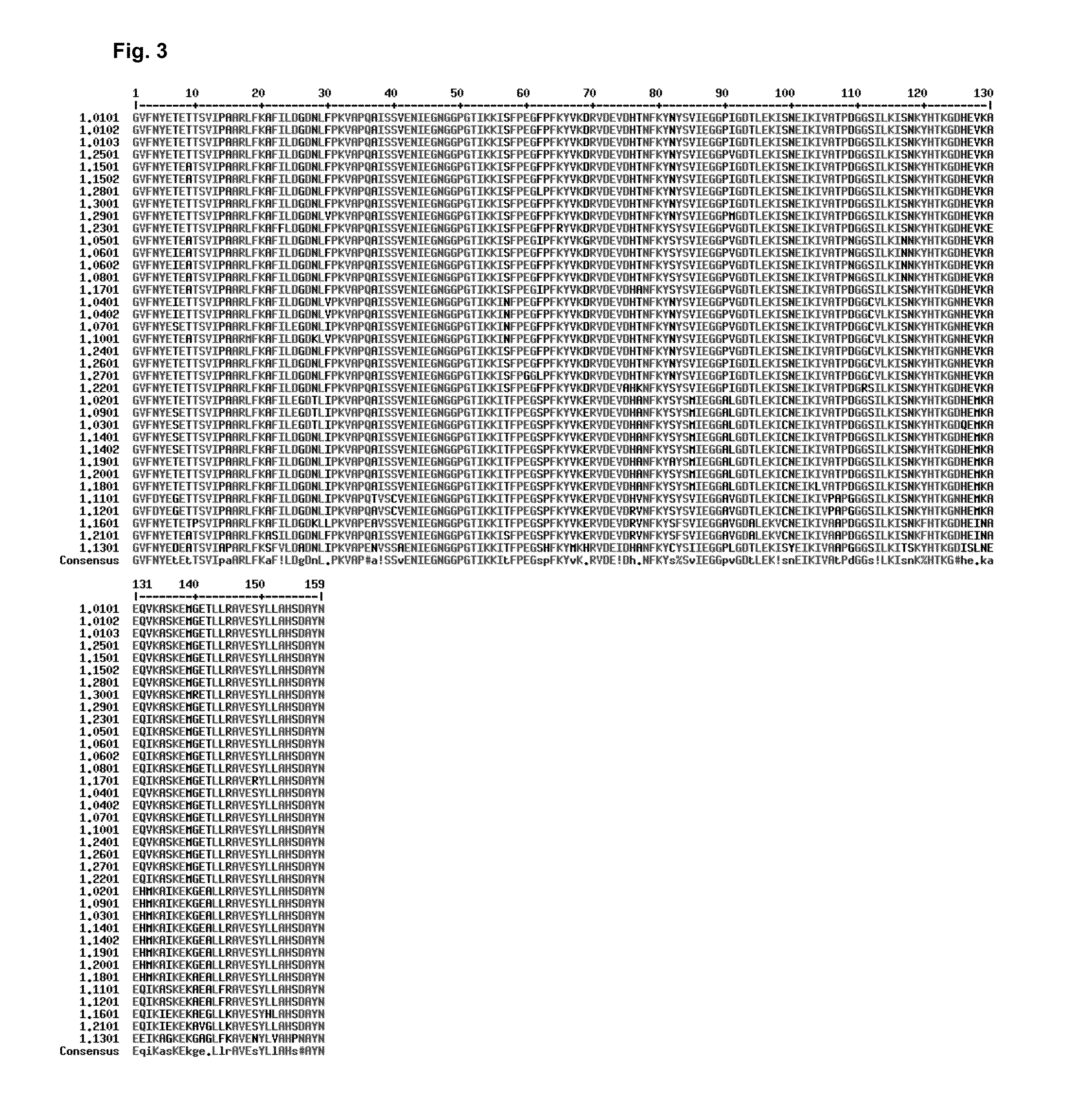Hypoallergen
a technology of b-cell epitope and hypoallergen, which is applied in the field of mutant polypeptides, can solve the problems of loss of tree-dimensional structure of polypeptide, inability to deduce the b-cell epitope directly from the three-dimensional structure of an allergen, and inability to generalize the dominating epitopes, etc., and achieve safe and efficient effects
- Summary
- Abstract
- Description
- Claims
- Application Information
AI Technical Summary
Benefits of technology
Problems solved by technology
Method used
Image
Examples
example 1
Design of the Bet v 1 Mutations
[0076]The goal in the hypoallergen design is to achieve a mutant allergen whose ability to bind and cross-link IgE-antibodies on the mast-cell surface is strongly reduced but which still maintains a very similar structure as the wild type allergen. This would favor the induction of IgG and other antibodies which would have ability to bind both to wild-type allergen and mutant allergen.
[0077]The knowledge of the IgE epitope would greatly simplify design. However, there is no structure of Bet v 1 complexed with the IgE antibody available. The use of peptides in the epitope scanning is also unreliable (Niemi et al., Structure (15):1413-21, 2007). The only method to suggest an epitope is to study the molecular surface of Bet v 1 allergen and test the possible hit by preparing mutants. Firstly, we identified a putative epitope (FIG. 1) on the molecular surface of Bet v 1. Secondly, we selected such residues on this putative epitope which as mutated would ma...
example 2
Cloning of the Recombinant Bet v 1 Molecules
[0080]To produce the wild type (wt) and the mutant of the recombinant Bet v 1 molecules (rBet v 1) the cDNAs encoding these particular proteins were cloned into a bacterial expression plasmid (FIG. 2). First, the rBet v 1 cDNAs designed in Example 1, with the codon optimization for Escherichia coli production in vector pUC57 (wt and N28K-E101K) were ordered from GenScript Corporation (USA). The cDNAs contained NcoI restriction site at the 5′end and HindIII at the 3′end. The cDNAs were cloned as NcoI-HindIII fragments into bacterial expression vector pKKtac encoding the Ervinia carotovora's pectate lyase (pelB) signal sequence (Takkinen et al., Protein Eng. (4): 837-841, 1991) and expression plasmids were transformed into E. coli XL-1 Blue strain. The DNA sequences of the rBet v 1 and the N28K-E101K mutant were verified by DNA sequencing (ABI 3100 Genetic Analyzer, Applied Biosystems), and are herein depicted as SEQ ID NO:s 1-2.
example 3
Production of the Recombinant Bet v 1 Molecules
[0081]The expression vector of wild type rBet v 1 was transformed into E. coli BL21 DE strain and the expression vector Bet v 1 N28K-E101K mutant into E. coli RV308 strain for bacterial expression. Single colonies of rBet v 1 wt and Bet v 1 N28K-E101K mutant were inoculated into 5 ml SB or TB, 100 μg / ml ampicillin and 1% glucose, respectively, and cultivated for 16 h at +37° C. with 220 rpm shaking. Cultivations were 1:50 diluted into 3×300 ml SB or TB with 100 μg / ml ampicillin and cultivated at +37° C. until the OD600 reached 4. Protein expression was induced by the addition of IPTG to a final concentration of 1 mM, and the cells were cultivated for 16 h at RT with 170 rpm shaking. Cells were harvested by centrifugation for 15 min at 5000 g at +4° C., and the periplasmic fraction of the cells was isolated by an osmosis-shock method described by Boer et al. (Protein Expression & Purification, 2007(51): 216-226). The cell pellet equivale...
PUM
| Property | Measurement | Unit |
|---|---|---|
| distance | aaaaa | aaaaa |
| time | aaaaa | aaaaa |
| pH | aaaaa | aaaaa |
Abstract
Description
Claims
Application Information
 Login to View More
Login to View More - R&D
- Intellectual Property
- Life Sciences
- Materials
- Tech Scout
- Unparalleled Data Quality
- Higher Quality Content
- 60% Fewer Hallucinations
Browse by: Latest US Patents, China's latest patents, Technical Efficacy Thesaurus, Application Domain, Technology Topic, Popular Technical Reports.
© 2025 PatSnap. All rights reserved.Legal|Privacy policy|Modern Slavery Act Transparency Statement|Sitemap|About US| Contact US: help@patsnap.com



